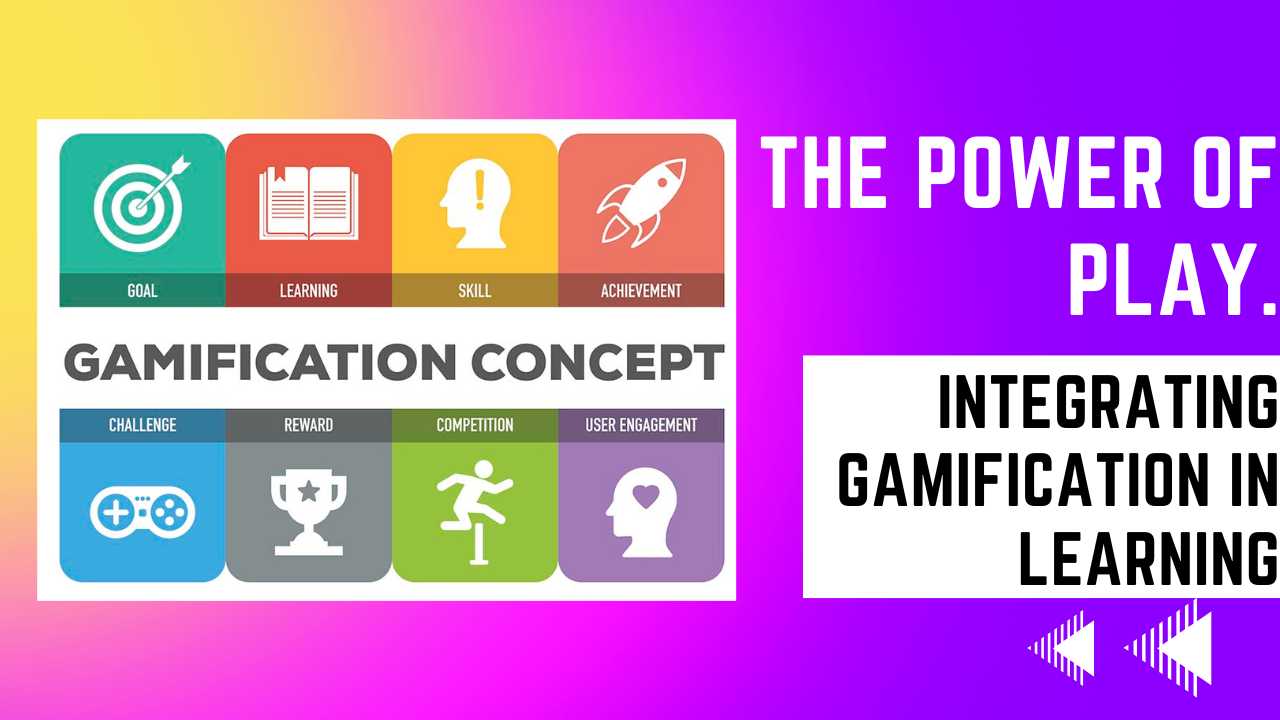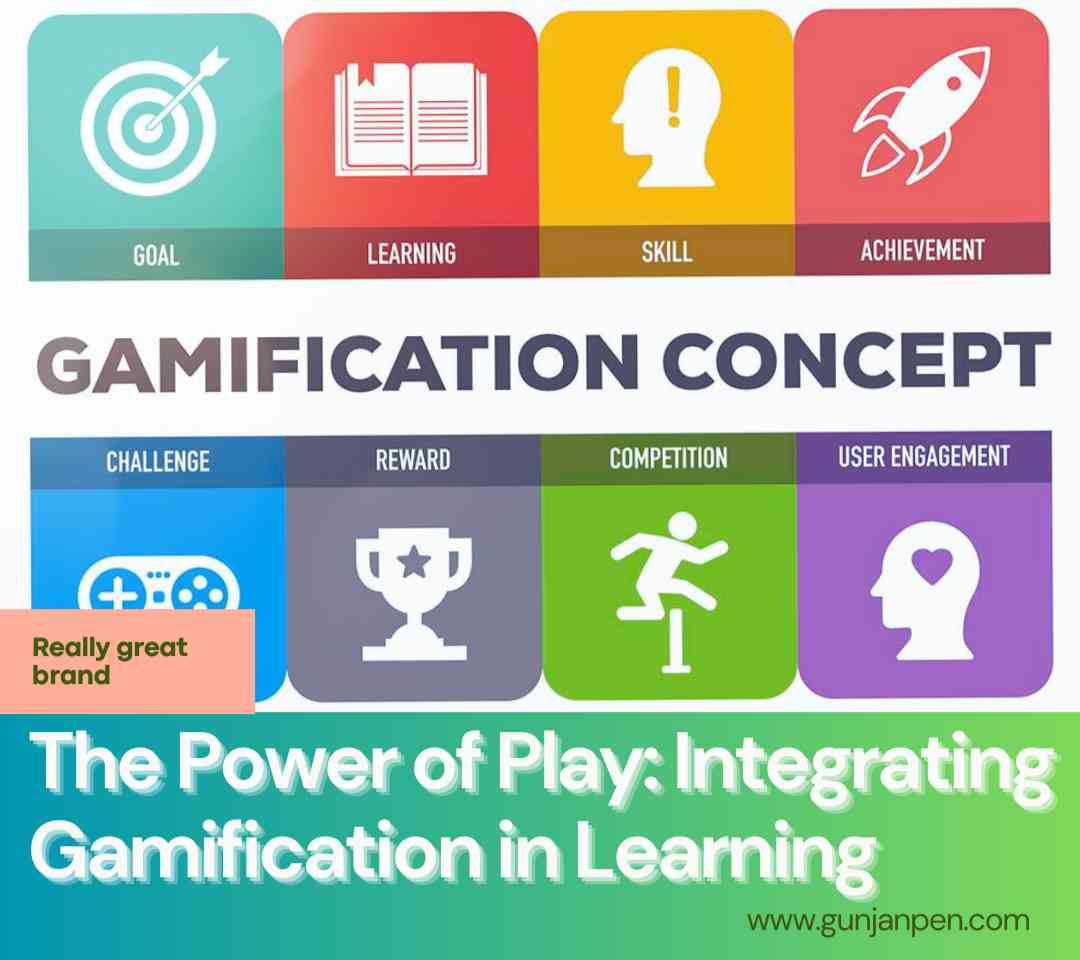Integrating Gamification in Learning 2023 – In today’s rapidly evolving educational landscape, the traditional methods of teaching are being revolutionized by innovative approaches that leverage technology and psychology to create engaging and effective learning experiences. One such approach that has gained significant traction is gamification – the integration of game elements and mechanics into non-game contexts, such as education. This article delves into the transformative potential of gamification in learning, exploring its benefits, implementation strategies, and real-world success stories.

Table of Contents
- Introduction: A Paradigm Shift in Learning
- Understanding Gamification
- The Psychological Underpinnings
- Benefits of Gamification in Learning
- Implementing Gamification: Practical Strategies
- Gamification in Different Educational Levels
- Real-World Examples of Gamified Learning
- Measuring the Effectiveness of Gamification
- Overcoming Challenges and Concerns
- The Future of Learning: A Gamified Landscape
- Ethical Considerations in Gamified Education
- Empowering Educators Through Gamification
- Engaging Parents and Guardians
- Gamification Beyond the Classroom
- Conclusion: Learning Through Play
Introduction: A Paradigm Shift in Learning
In an era dominated by digital technology and interactive experiences, the traditional chalk-and-talk model of education is facing a paradigm shift. Students today are accustomed to engaging, immersive, and dynamic content, making the integration of gamification in learning a logical step forward.
Understanding Gamification
Gamification involves the application of game-design elements – such as competition, rewards, challenges, and progression – to educational contexts. This approach transforms learning materials into interactive and enjoyable experiences, capturing learners’ attention and fostering a sense of achievement.
The Psychological Underpinnings
The success of gamification lies in its ability to tap into psychological motivators. Concepts like intrinsic motivation, immediate feedback, and the desire for mastery are all harnessed through well-designed gamified learning modules.
Benefits of Gamification in Learning
Gamification offers a plethora of benefits, including increased engagement, improved retention, and the development of problem-solving skills. By making learning enjoyable and meaningful, students are more likely to remain focused and retain the knowledge acquired.
Implementing Gamification: Practical Strategies
Integrating gamification requires a thoughtful approach. Educators can leverage elements like points, badges, leaderboards, and narrative contexts to create an immersive learning environment that aligns with curricular objectives.
Gamification in Different Educational Levels
From primary education to higher academia, gamification can be adapted to suit various learning levels. Interactive quizzes, virtual simulations, and collaborative challenges can be tailored to meet the needs of different age groups.
Real-World Examples of Gamified Learning
Numerous success stories illustrate the potential of gamification. For instance, Duolingo employs gamified language learning, while Minecraft: Education Edition transforms complex concepts into interactive experiences.
Measuring the Effectiveness of Gamification
Assessing the impact of gamification involves tracking metrics such as participation rates, knowledge retention, and user satisfaction. These data points help refine gamified strategies for optimal outcomes.
SVV Study Material: Empowering Education with Shree Vasishtha Vidhyalaya
Overcoming Challenges and Concerns
While gamification holds immense promise, challenges like designing balanced mechanics and preventing over-competition must be addressed. Additionally, concerns about equity and accessibility must be considered.
The Future of Learning: A Gamified Landscape
As technology continues to advance, the potential for gamification in education is boundless. The future may witness AI-driven personalized learning journeys and fully immersive virtual classrooms.
Ethical Considerations in Gamified Education
Ethical discussions surrounding data privacy, consent, and psychological well-being are critical as gamification becomes more prevalent. Striking the right balance between engagement and ethical responsibility is paramount.
Empowering Educators Through Gamification
Gamification empowers educators to creatively design interactive lessons, tailoring content to resonate with students. This approach enhances the teacher-student dynamic and encourages a collaborative learning environment.

Engaging Parents and Guardians
Gamification extends beyond the classroom – it can bridge the gap between parents and their children’s education. Progress dashboards, parent-teacher gamified interactions, and shared challenges foster a deeper connection to the learning process.
Gamification Beyond the Classroom
The principles of gamification can be applied beyond formal education settings. From employee training to public health campaigns, gamification has the potential to revolutionize how we learn and engage with information.
Conclusion: Learning Through Play
In conclusion, the integration of gamification in learning represents a profound shift in education. By harnessing the power of play, educators can create dynamic, engaging, and effective learning experiences that empower students to thrive in a rapidly changing world.
FAQs
Is gamification suitable for all subjects?
Gamification can be adapted for various subjects, but careful consideration of learning objectives is crucial for its successful implementation.
How can gamification benefit shy or introverted students?
Gamification provides a safe and interactive platform for shy students to participate actively and build their confidence.
Are there any potential drawbacks of gamified learning?
While gamification offers numerous benefits, an excessive focus on rewards can sometimes undermine intrinsic motivation.
Can gamification work for adult learners?
Absolutely! Gamification principles can be applied effectively to engage learners of all ages, including adults.
Where can I learn more about implementing gamification in my teaching?
For more information and resources, visit this link.
- Morschheuser, Benedikt; Hamari, Juho; Koivisto, Jonna (2016). “Gamification in Crowdsourcing: A Review”. 2016 49th Hawaii International Conference on System Sciences (HICSS). pp. 4375–4384. doi:10.1109/HICSS.2016.543. ISBN 978-0-7695-5670-3. S2CID 29654897. Archived from the original on 2016-09-19. Retrieved 2016-09-11.
- ^ Dincelli, Ersin; Chengalur-Smith, InduShobha (2020). “Choose your own training adventure: Designing a gamified SETA artefact for improving information security and privacy through interactive storytelling”. European Journal of Information Systems. 29 (6): 669–687.
- Gamification
- Behavioral economics
- Gaming
- User interface techniques
-
People also askWhat is gamification and examples?
